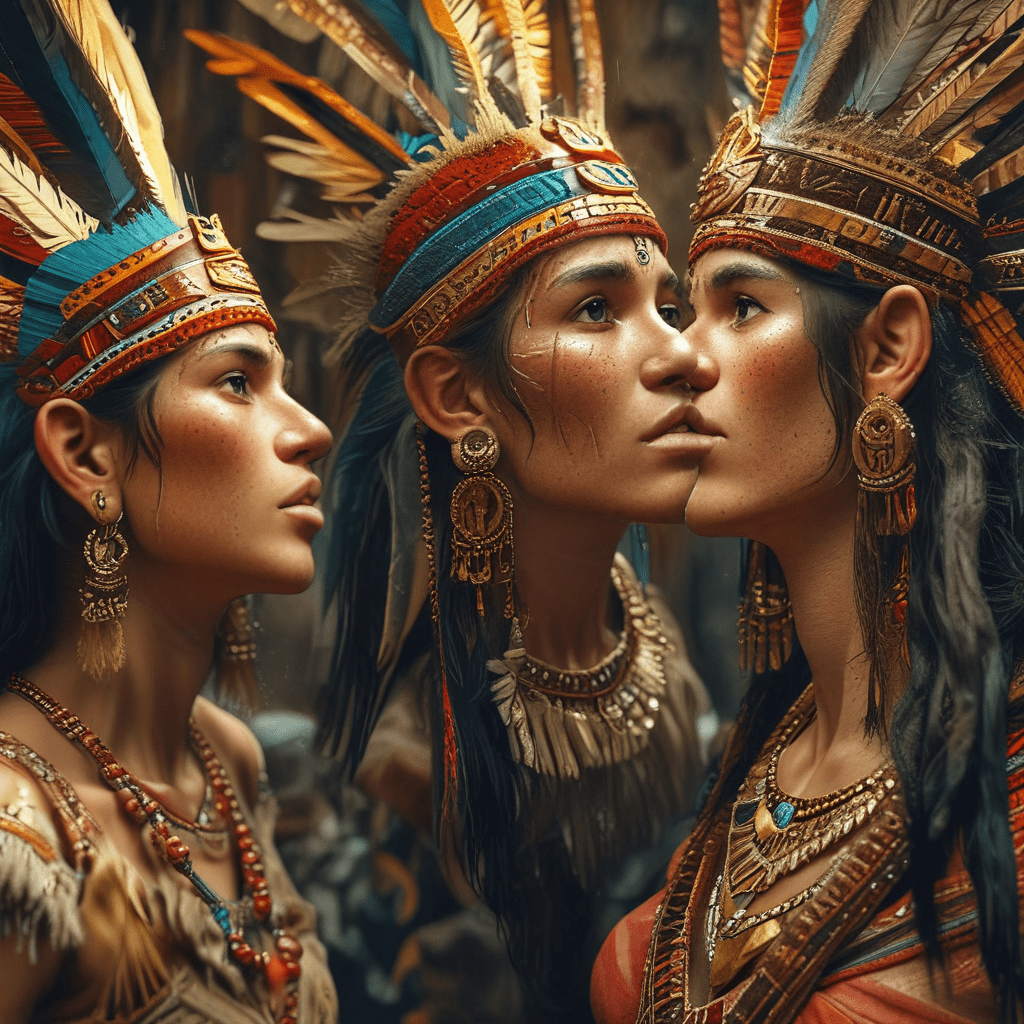Eternal Flames: The Most Passionate Love Stories from Mythology
Introduction to Eternal Flames in Mythology
The term “Eternal Flames” evokes images of undying love and passion that transcend time and space. In the context of mythology, these flames symbolize the enduring nature of love stories that have captured the hearts of people through the ages. Throughout various mythologies, passionate love is not merely a human experience; it is often portrayed as a divine force that shapes destinies, influences cultures, and ignites the imagination.
This article aims to explore some of the most passionate love stories from different mythologies around the world. We will delve into the origins of these tales, their cultural significance, and the universal themes that resonate within them, ultimately illuminating the power of love as an eternal flame that burns brightly across time.
The Origins of Passionate Love in Ancient Myths
Love has been a central theme in mythology since ancient times, serving as a reflection of human emotions and aspirations. In many cultures, gods and goddesses embody the ideals of love and romance, often engaging in relationships that highlight the complexities of passion.
Across civilizations, love stories have been used to impart moral lessons, explain natural phenomena, or celebrate the bonds between individuals. The myths surrounding these relationships often reveal cultural attitudes toward love, duty, and sacrifice, emphasizing that love is both a beautiful and tumultuous experience.
Greek Mythology: The Tale of Orpheus and Eurydice
One of the most poignant love stories in Greek mythology is that of Orpheus and Eurydice. Orpheus, a gifted musician, fell deeply in love with the beautiful nymph Eurydice. Their love was pure and passionate, but tragedy struck when Eurydice was bitten by a snake and died.
Devastated, Orpheus descended into the Underworld, determined to retrieve his beloved. With his enchanting music, he managed to persuade Hades, the god of the Underworld, to allow Eurydice to return to the surface, but with one crucial condition: Orpheus must not look back at her until they had both reached the upper world.
In a moment of weakness, Orpheus turned to see if Eurydice was following him, and as a result, she was lost to him forever. This tale encapsulates themes of loss, longing, and the transcendent power of love and music, demonstrating how love can inspire great acts of bravery as well as deep sorrow.
Roman Legends: Pyramus and Thisbe
The tragic love story of Pyramus and Thisbe, often regarded as a precursor to Shakespeare’s “Romeo and Juliet,” highlights the theme of forbidden love. Pyramus and Thisbe were two young lovers in ancient Babylon, separated by a wall that divided their homes. Despite their families’ disapproval, they communicated through a crack in the wall and made plans to elope.
However, a series of misunderstandings led to their tragic deaths. When Pyramus found Thisbe’s veil stained with blood, he presumed she was dead and took his own life. When Thisbe discovered Pyramus dead, she followed suit. Their tragic end symbolizes the power of love that defies barriers but also the devastating consequences of miscommunication and societal constraints.
Norse Mythology: The Love of Freyja and Odin
Freyja, the Norse goddess of love, beauty, and fertility, is a pivotal figure in Norse mythology. Her relationships, particularly with Odin, the chief god, are marked by passion, jealousy, and the complexities of divine love. Freyja’s love for Odin was fierce, but it was often intertwined with themes of power and duty, as both deities had responsibilities that sometimes placed them at odds.
Their love story reflects the intricate balance between passion and obligation, highlighting that love in Norse mythology is not merely an emotion but a force that can influence the fate of gods and mortals alike. Freyja’s desire for her beloved often led her to make sacrifices, embodying the idea that true love demands both devotion and courage.
Asian Mythology: The Legend of Chang’e and Hou Yi
In Chinese mythology, the story of Chang’e and Hou Yi is a tale of love, sacrifice, and immortality. Hou Yi was a heroic archer who shot down nine suns to save the Earth from scorching heat. As a reward, he received an elixir of immortality. However, he did not want to leave Chang’e behind, so he hid the elixir until a time of need.
Tragically, when Hou Yi was away, a greedy apprentice attempted to steal the elixir. To protect it, Chang’e consumed it herself and ascended to the moon, becoming the moon goddess. This bittersweet ending reflects themes of love and sacrifice, illustrating how true love can lead to profound separation yet eternal remembrance.
The story of Chang’e and Hou Yi has influenced Chinese culture, especially during the Mid-Autumn Festival, where families celebrate love and reunion under the full moon.
Native American Myths: The Love Story of Sky Woman and the Earth
In Native American mythology, the tale of Sky Woman is a beautiful representation of love and harmony with nature. Sky Woman fell from the sky world and landed on the back of a great turtle, which became the Earth. She brought with her seeds and plants, nurturing life on Earth.
Sky Woman’s love for the Earth and its inhabitants exemplifies themes of creation and connection. Her enduring legacy is celebrated in various Native American cultures, symbolizing the deep bond between humans and the natural world. The love story of Sky Woman serves as a reminder of the importance of harmony and respect for nature.
African Mythology: The Romance of Shango and Oya
In Yoruba mythology, the love affair between Shango, the god of thunder, and Oya, the goddess of winds and storms, is a tale of power, passion, and transformation. Their love is characterized by fierce loyalty and intense emotions, reflecting the duality of nature and human relationships.
Shango and Oya’s relationship symbolizes the balance of power and the storms of passion that can define romantic partnerships. Their love has had a significant impact on Yoruba culture and has been celebrated in various forms of art and storytelling, showcasing the dynamic interplay between love and the forces of nature.
Conclusion
The exploration of passionate love stories in mythology reveals timeless themes that continue to resonate with us today. From the tragic tales of Orpheus and Eurydice to the divine romance of Shango and Oya, these stories illuminate the complexities of love—its joys, sacrifices, and the eternal flames that burn brightly in the hearts of lovers across cultures.
As we reflect on these myths, we recognize that love, in all its forms, remains a powerful force that shapes our lives and our understanding of the world. These eternal flames of passion remind us that love transcends time and space, connecting us to the past and inspiring future generations.



